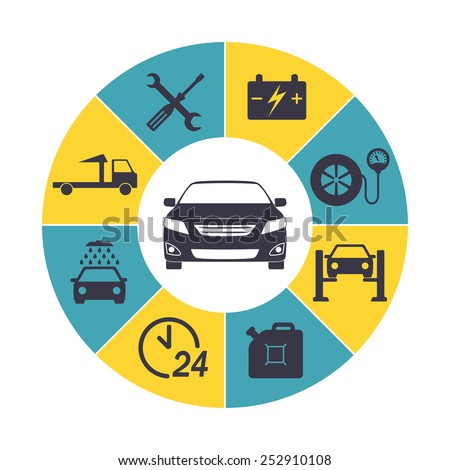The Crucial Need For Ongoing Tire Maintenance: Just How To Successfully Evaluate And Revolve Your Tires
The Crucial Need For Ongoing Tire Maintenance: Just How To Successfully Evaluate And Revolve Your Tires
Blog Article
Material By-Gylling Dalton
Guaranteeing your tires remain in top problem is greater than just a regular task-- it's a safety necessary for each journey you start. From preserving correct atmospheric pressure to examining for damage, the health of your tires directly influences your automobile's performance and your well-being on the road. But what are the key actions to take to maintain your tires in prime shape? Let's explore the essential elements of tire upkeep that you shouldn't ignore.
Advantages of Regular Tire Maintenance
Routine tire upkeep offers a range of advantages that can boost your driving experience and guarantee your safety and security on the road. By maintaining your tires correctly pumped up, you improve gas efficiency, saving you cash at the pump.
Well-maintained tires also offer better grip, decreasing the danger of mishaps, especially throughout inclement weather condition. Appropriately aligned and well balanced tires lead to a smoother experience, reducing resonances and improving total vehicle handling.
Regularly turning your tires advertises even walk wear, prolonging their lifespan and conserving you from premature replacements. Furthermore, maintaining the right tire pressure can protect against blowouts and apartments, decreasing the chances of unanticipated breakdowns when driving.
Tire Inspection Guidelines
When examining your tires, it's essential to take note of various crucial elements to guarantee they remain in optimum problem for risk-free driving. Beginning by inspecting the tire stress using a stress scale to ensure it matches the maker's recommended degree.
Evaluate the step deepness by putting a penny upside-down right into the tread grooves; if you can see all of Lincoln's head, it's time for brand-new tires. Seek any kind of indicators of unequal wear, which may indicate positioning issues or inappropriate rising cost of living.
Check for cuts, bulges, or cracks on the tire sidewalls, as these can lead to blowouts. Additionally, take a look at the tire valves for damage or leaks. Remember to examine all 4 tires, including the spare if suitable.
Proper Tire Rotation Techniques
To ensure also put on and prolong the life expectancy of your tires, it's necessary to comply with appropriate tire turning techniques. Normal tire turning assists disperse put on evenly across all four tires, promoting longer walk life and boosting overall efficiency. Beginning by examining your vehicle's manual for the suggested rotation pattern. Commonly, front-wheel-drive, rear-wheel-drive, and all-wheel-drive lorries have different rotation patterns to represent varying wear patterns.
For a lot of lorries, the recommended tire rotation interval is every 6,000 to 8,000 miles, yet this might vary, so it's essential to consult your handbook.
When revolving your tires, exchange the front tires with the rear tires, moving the left rear tire to the left front position and the other way around. Remember to also cross the rear tires to the opposite sides when moving them to the front. This basic yet reliable turning strategy helps make certain that all tires use equally, optimizing their lifespan and preserving optimal efficiency.
brake caliper cost to repair to focus on routine tire maintenance to maintain your vehicle running efficiently and safely. By complying with easy examination standards and appropriate turning strategies, you can extend the lifespan of your tires, improve fuel efficiency, and enhance total performance when driving. brake repair shop ignore the relevance of dealing with your tires - it's a small initiative that can make a large difference in your driving experience.
